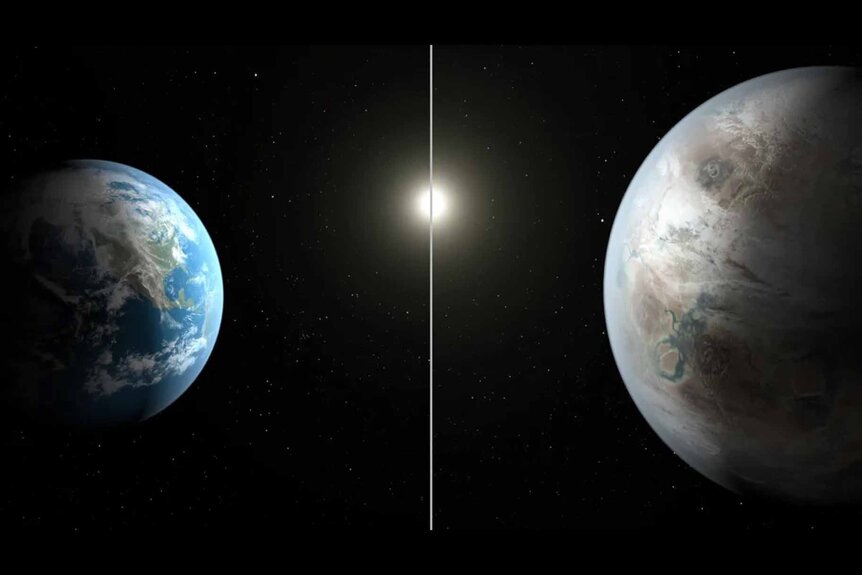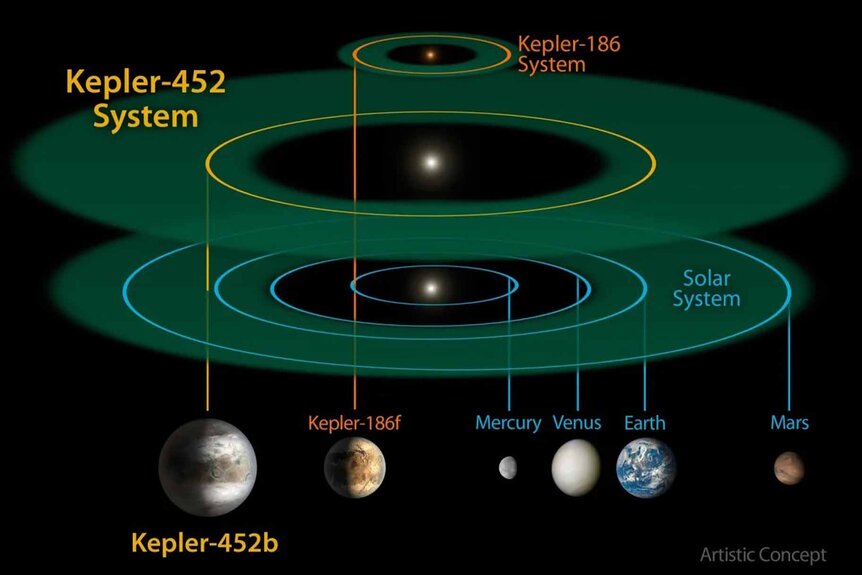Create a free profile to get unlimited access to exclusive videos, sweepstakes, and more!
Astronomers Find Clues for Alien Life on the Planet Most like Earth: Kepler-452b
But don't pack your bags just yet.
The crew of The Ark (streaming now on Peacock) abandoned a dying Earth in pursuit of humanity’s new home on Proxima centauri b. That world does have one thing going for it, it’s nearby, orbiting the star Proxima centauri about 4.2 light-years from here. In terms of other places we might move to, it’s basically the system next door. Other than that, though, it’s not the best planet to try and make a life on.
RELATED: A Third Possible Planet for Proxima Centauri, the Closest Star to the Sun!
It orbits very close to its star, less than 5% of the distance Earth has from the Sun, and completes a year every 11.2 two days. At that distance, there’s a good chance that the planet is tidally locked, one side of it permanently facing the star. Aside from its size, 1.03 times the diameter of the Earth, it’s not very like our planet at all. Now, however, astronomers have identified a new exoplanet which is more like the Earth than any we’ve found before.
Kepler-452b Is the Exoplanet Most Like the Earth
Using data collected by the Kepler Space Telescope and ground observations at the McDonald Observatory in Texas, the Whipple Observatory in Arizona, and the Keck Observatory in Hawaii, astronomers confirmed the presence of Kepler-452b, roughly 1,400 light-years from here. The discovery was published in The Astronomical Journal. It is noteworthy as the first near-Earth-size planet in the habitable zone of its star. In fact, it’s the smallest planet ever found inside a habitable zone, with a diameter roughly 60% larger than the Earth.
“On the 20th anniversary year of the discovery that proved other suns host planets, the Kepler exoplanet explorer has discovered a planet and star which most closely resemble the Earth and our Sun. This exciting result brings us one step closer to finding an Earth 2.0,” said John Grunsfeld, associate director of NASA’s Science Mission Directorate, in a statement.
There is still a lot of basic science to do before we start dreaming up interstellar ships and plot a course to Kepler-452b. We’re not even totally sure what the planet is made of. It’s possible that 452b is a sub-Neptune with a solid core covered in a layer of ice and blanketed in a thick atmosphere. However, planets of this size are more than likely rocky, according to NASA.
RELATED: JWST Finds Possible Signs of Life on Exoplanet K2-18 b
In addition to being roughly Earth-sized and lying within its star’s habitable zone, Kepler-452b is like Earth in some other ways. It orbits at a distance about 5% further from its star than the Earth is from the Sun. As a result, its year is almost the same length as ours, at roughly 385 days. All things considered, living there might be pretty similar to living here. Or it might have been, once upon a time.
The system’s estimated age is roughly 6 billion years, about 1.5 billion years older than the Sun. That could mean that life there got a headstart on us, assuming the conditions are suitable. “It’s awe-inspiring to consider that this planet has spent 6 billion years in the habitable zone of its star; longer than Earth. That's a substantial opportunity for life to arise, should all the necessary ingredients and conditions for life exist on this planet,” said Kepler data analyst lead, Jon Jenkins.
RELATED: 5,000th Exoplanet Found!
While 452b might be the most immediately exciting planet in the bunch, the team also identified 521 additional exoplanet candidates, bringing Kepler’s total up to 4,696. Considering how many worlds we find practically everywhere we look, it’s likely we’ll continue to find places that are more and more like the Earth. We might even find someplace we can dream about going to visit ourselves. When we do finally leave Earth in search of someplace else, hopefully we’ll have a better candidate than Proxima centauri b.
Catch the complete first season of The Ark streaming now on Peacock.




































